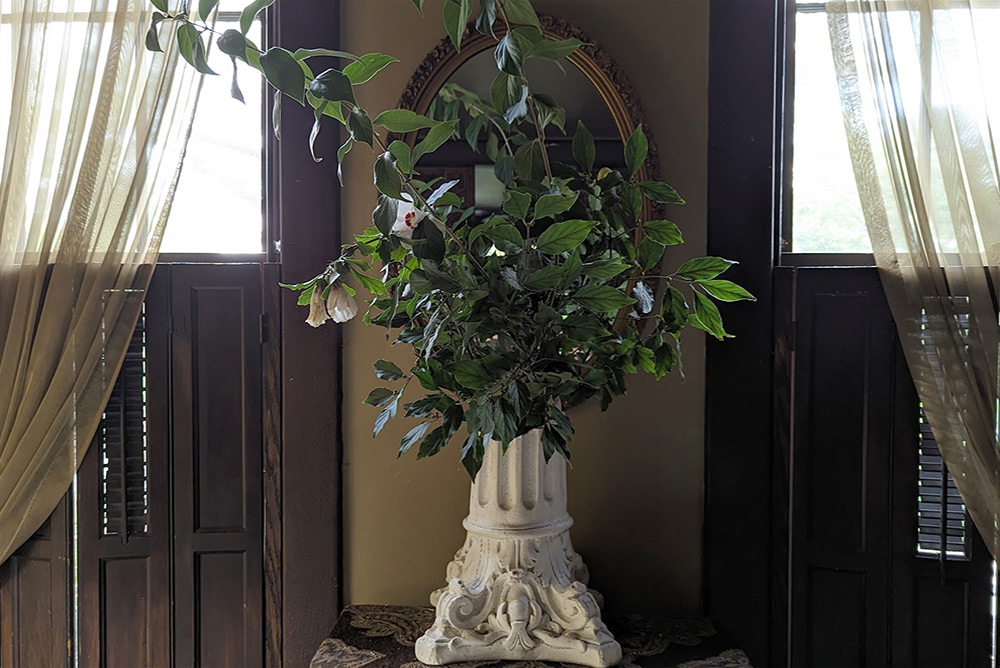
Cut branches—with blooms—from a Rose of Sharon fill a vase just in time for dinner guests to appreciate. / Photo by Stephanie Cavanaugh.
By Stephanie Cavanaugh
If non-native, invasive plants upset you, please avert your eyes, snowflake.*
UNTIL THREE days ago, I didn’t know that cut branches of the Rose of Sharon would do quite nicely in a vase—if there are buds on the branch, they’ll continue to open. Sounds really dim-witted, right?
We had guests coming for dinner and the vase behind the sofa was empty, and I do like a powerful bunch of greenery in it. With minutes to spare before arrival, I dashed out to the curb and clipped a few branches from one of the Rose of Sharon bushes we’re cultivating alongside the curb, one branch with several buds and a single flower, though I didn’t expect that to last—maybe we’d get the evening out of it—before it shriveled.
With hibiscus, of which this is a hardy variety that survives freezing temperatures, the flowers open and are lovely for just one day, then poof. The flowers on the branch I cut stayed open and are continuing to open. Why is this surprising me?
We’ve been growing Rose of Sharon plants for decades. Some are in the backyard, some in the back alley, others along the curb. Such jolly non-natives with their purple, white and pink, all sprouts or offshoots of a red-and-white hybrid that the Prince and Baby bought me 30-some years ago for Mother’s Day.
Ick, or words to that effect, I said when I saw it. What an old-lady plant. Feh. But it was a gift from my loved ones, so it was planted (and neglected), and it grew and grew and became a small tree that hides the dining area of the back porch from neighboring eyes. The red and white flowers make me feel like I’m in the South of France, not 12 blocks from the US Capitol.
Now I’m an old lady, and I’m quite happily surrounded by them. We planted an offshoot in one of the two main garden beds; it came up purple. Others were added elsewhere from time to time—we never knew what color they’d be. They do breed like rabbits, although most sprouts disappear before they develop. I’ve never managed to care why.
Once planted, in whatever dirt you have handy, they’re completely trouble-free, they’ll grow like weeds and bloom prolifically from June through frost—one of few flowering plants to do so. Around here, the crape myrtle, a spectacular tree that I do so love, looks like hell for far too long, dead-looking branches amid the tulips, still dead-looking when the roses begin to scent the air. If the flowers on the Rose of Sharon come out as summer begins, it’s a leafy and green backdrop for spring bulbs and flowers.
*I say this most affectionately, as my preference is also for native plants. But sometimes . . . stuff happens.

Hope the guests noticed – and said “gosh, what a wonderful display!” If not shame on them for being so unobservant……